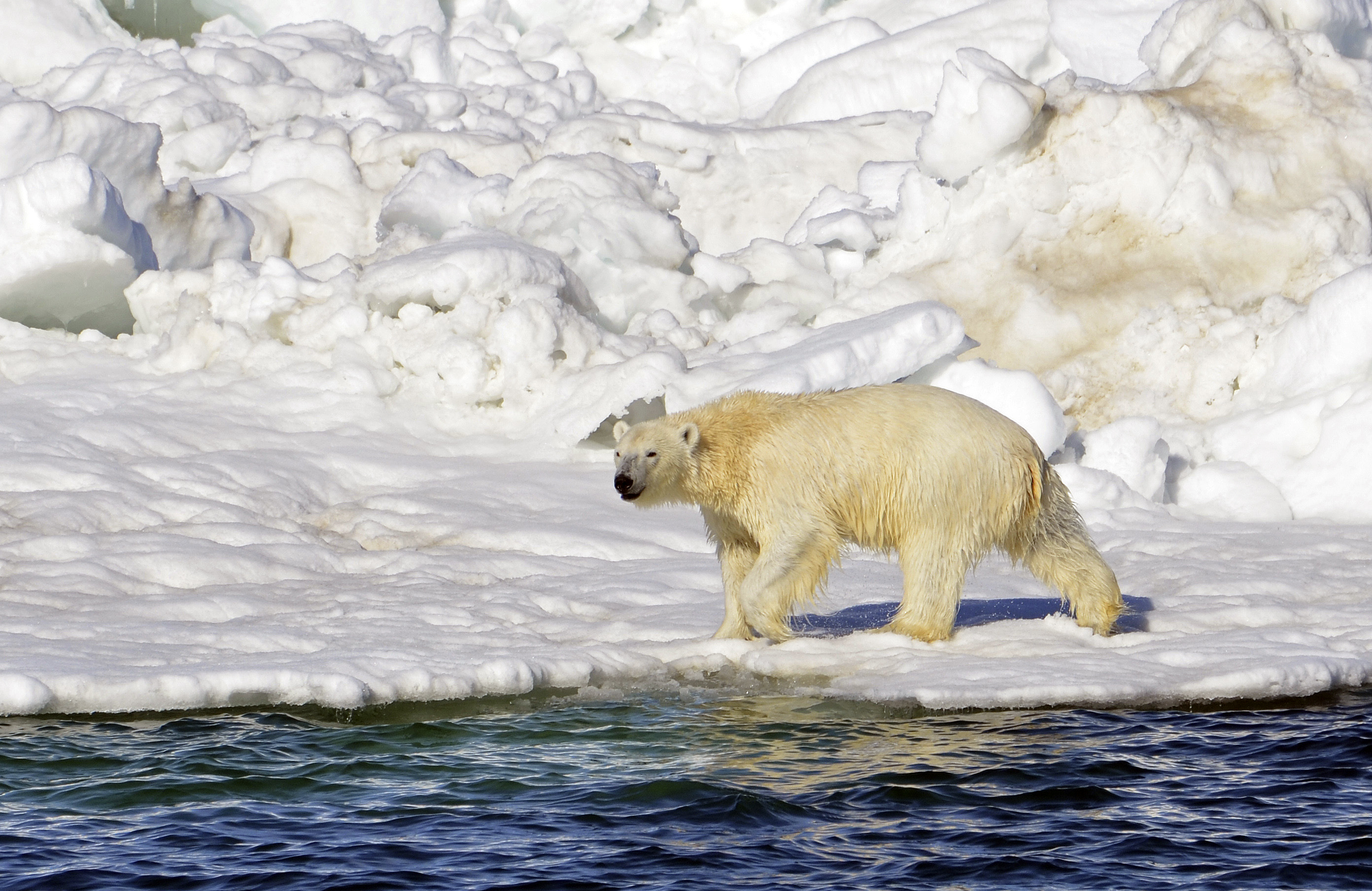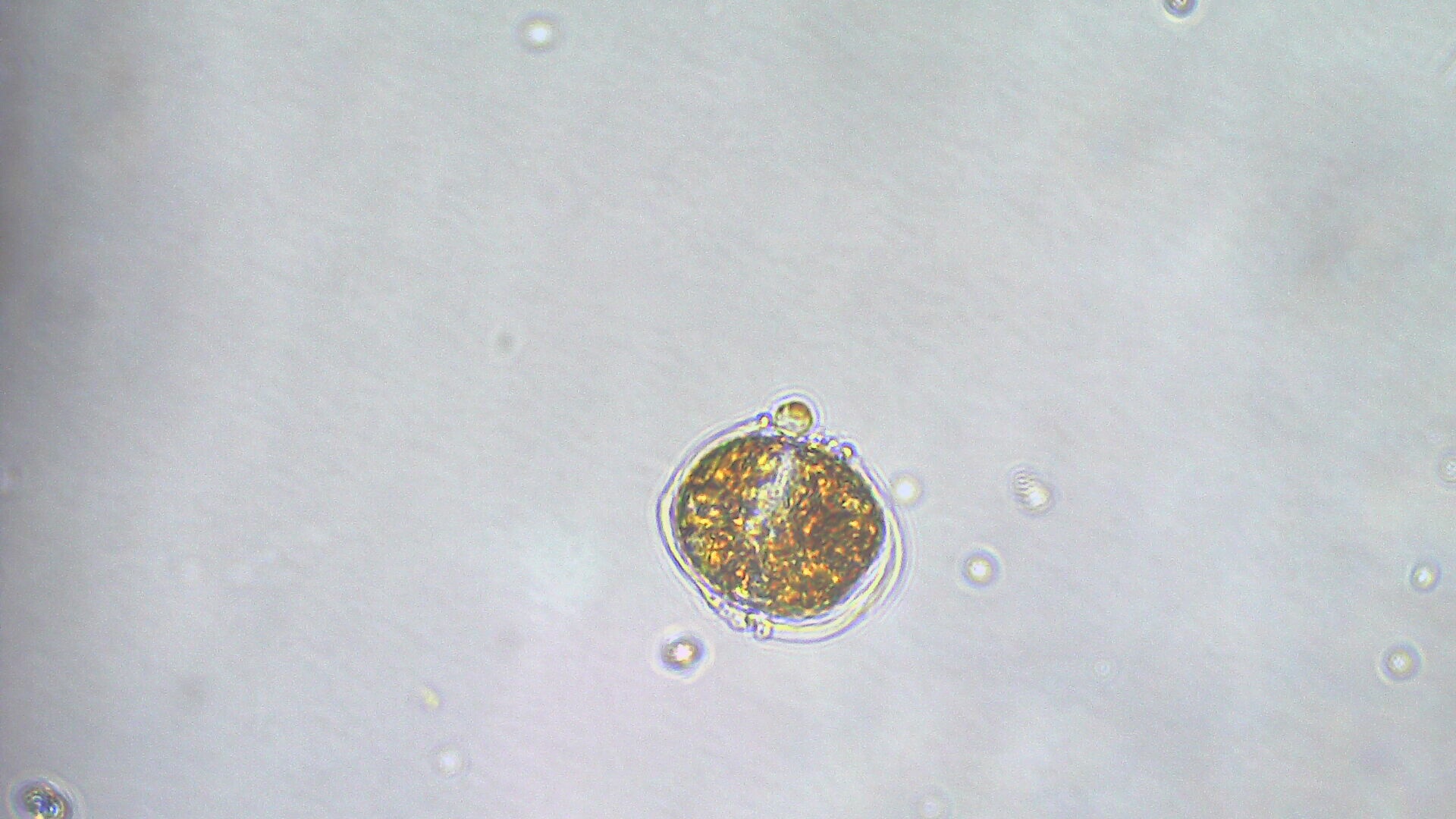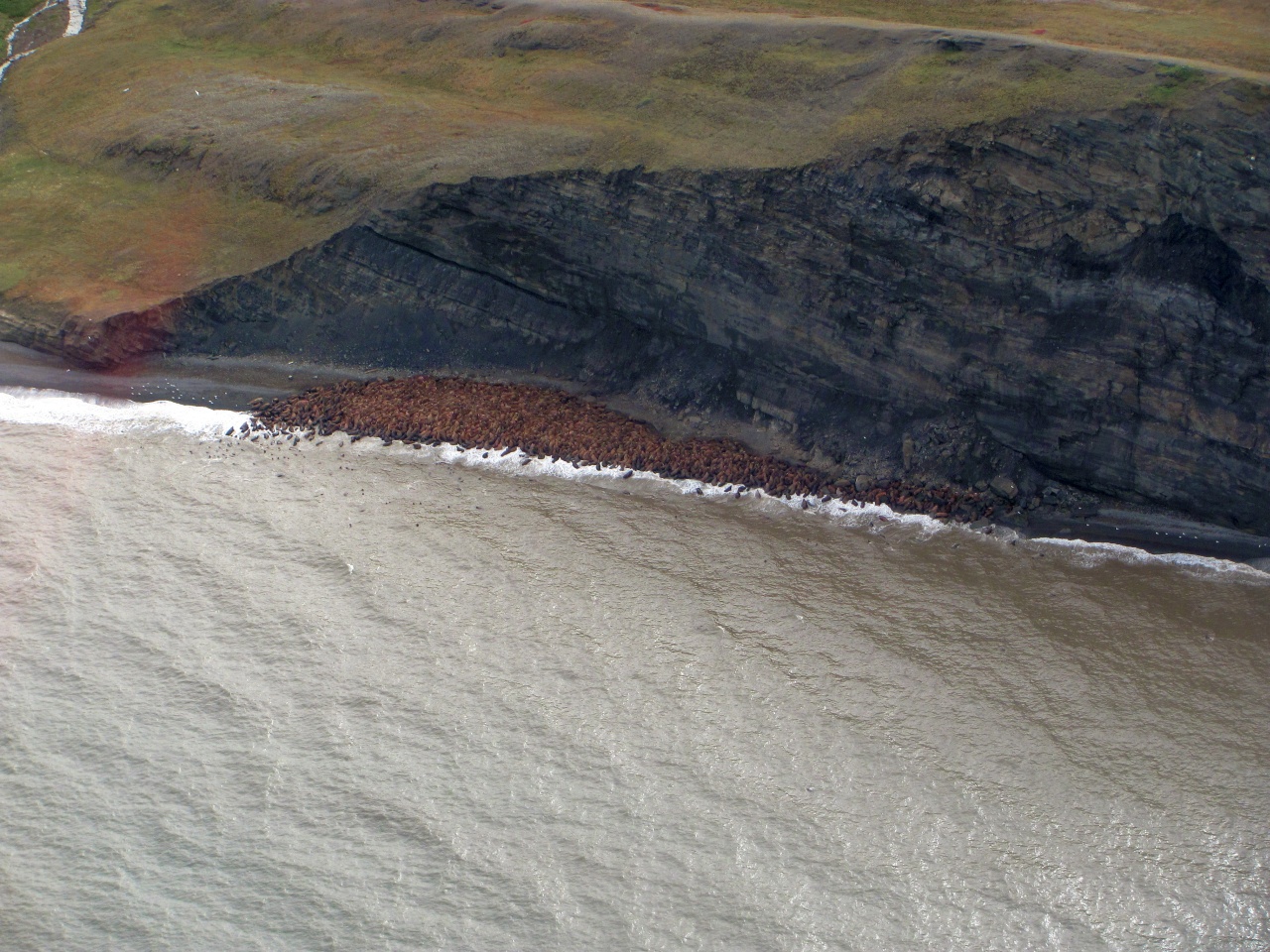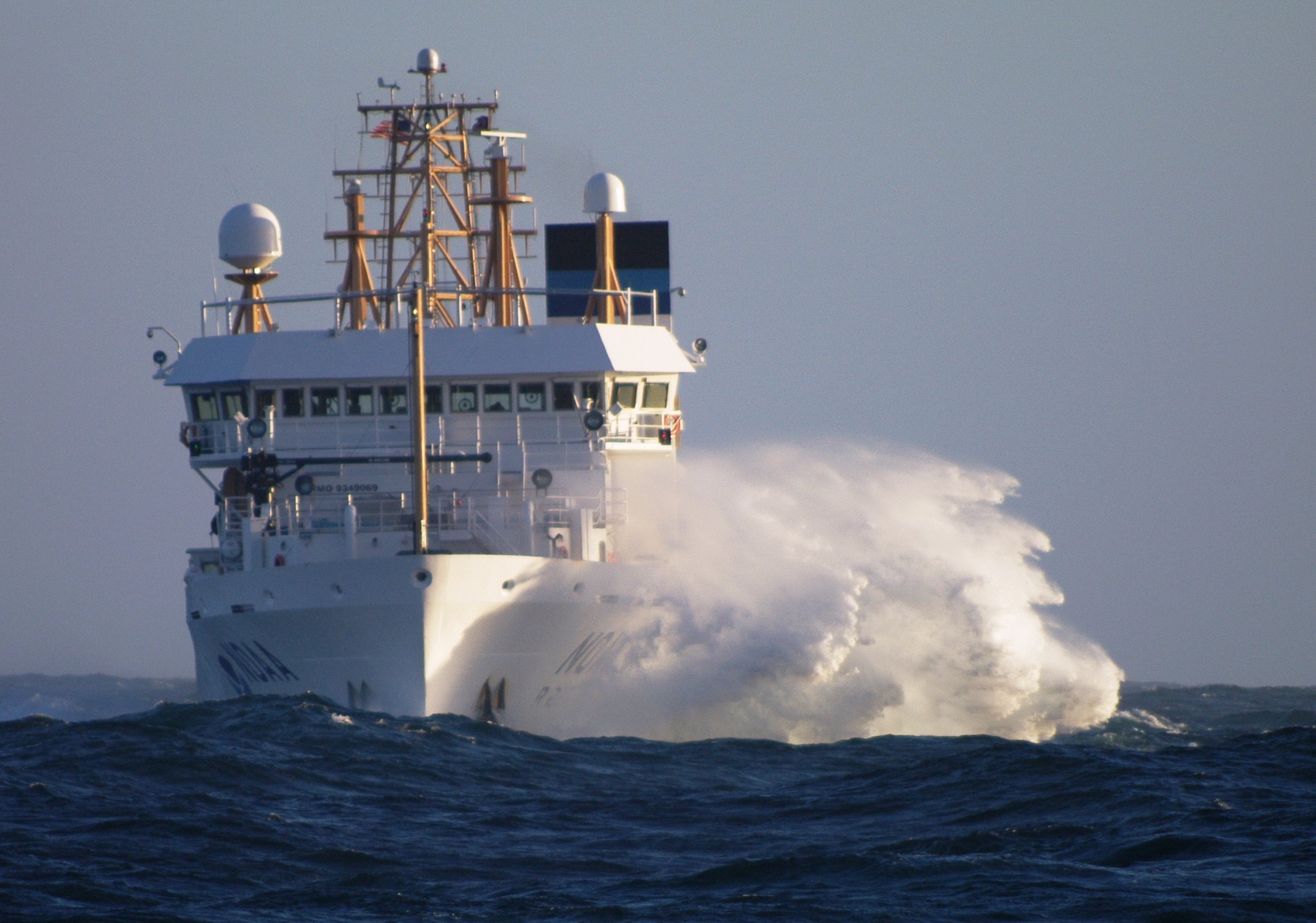How Russia’s Ukraine war is upending international scientific research across the Bering Strait
The future of many cross-border relationships cultivated by scientists in Russia and the United States is now in doubt.

Don Anderson, a senior scientist at the Woods Hole Oceanographic Institution, has been on a mission to learn about algal toxin risks in the waters around and north of the Bering Strait, the narrow passageway separating Alaska and Russia. He and his colleagues have mapped staggeringly large seedbeds of Alexandrium catenella, the algae that produces the toxin that causes paralytic shellfish poisoning.
But their maps of cyst beds have one big flaw that he wants to correct: They stop at the US-Russia maritime border.
“There’s a big line right down the middle, right through the Bering Sea, right through the Chukchi Sea,” Anderson said. And there is “no doubt whatsoever” that the high concentrations of Alexandrium cysts extend to the Russian side, making knowledge important to residents of Chukotka villages who depend on wild foods from the sea, he said. As waters have warmed, recent discoveries show, cysts are more likely to be activated, bloom and produce deadly saxitoxin.
That is why he and his colleagues had planned to work together this year with scientists from Russia’s Far East Academy of Sciences in Vladivostok to produce better maps of saxitoxin risk in the region.
“What I was hoping was that we would get the data from our colleagues in the same time frame and publish together and finally produce a map that shows everything and not just half,” Anderson said.

But that will not happen, at least not this year, because of the schism in relations caused by Russia’s invasion of Ukraine that has reverberated in the scientific communities across the Arctic.
Collaboration with Russian science partners is now on hold, Anderson was advised by U.S. officials. “The message to all of us was to cease communication with our Russian colleagues,” he said.
At best, Russian scientists will work independently of the American scientists and publish separately, but that would not be as good as having the Russian scientists working in his lab and using the same protocols so that analysis of samples taken from either side of the maritime border would be consistent.
[Ukraine conflict hurts Russian science, as West pulls funding]
The algae project is an example of important cross-border scientific research interrupted by the war in Ukraine.
Among the war’s victims are longtime cooperative programs that study, manage and protect animals that range on both sides of Bering Strait, where conditions are changing rapidly. The cooperation has its legal roots in a 1972 treaty between the U.S. and the Soviet Union aimed at “solving the most important aspects of the problems of the environment,” according to its wording.
That longstanding cooperation includes joint work on the polar bear population that roams between Alaska and Siberia, the subject of another treaty signed in 2000 and updated in 2007 to establish a legal, regulated subsistence hunt in Chukotka to replace an illegal and unregulated hunt that was deemed a threat to the population. Science cooperation produced an updated and more precise estimate of the Chukchi population.
In recent years, study of the Chukchi Sea polar bear population has focused on Russia’s Wrangel Island, a wildlife reserve that is used by hundreds and possibly thousands of polar bears during the open-water season. Since 2016, there have been summer field seasons there through a joint program of the U.S. Fish and Wildlife Service, Russia’s Wrangel Island State Nature Reserve, the University of Washington’s Polar Science Center and other Russian and U.S. institutions.

“I’ve been studying polar bears for 20 years. My time there has been, hands-down, the neatest thing I’ve ever done,” said Eric Regehr, a biologist who set up the Wrangel Island program when he was with the Fish and Wildlife Service and who was on the island in 2017, 2018 and 2019. He described the island as the “ecological heart of the whole Chukchi ecosystem.”
“It’s an amazing concentration of animals on Wrangel,” said Regehr, now with the University of Washington’s Polar Science Center. “There were years when I would physically see about 700 bears,” he said.
This year, Regehr was to have traveled again to the island, along with some Fish and Wildlife Service colleagues.
Those plans are now off, he said. “It’s just not practical or possible or safe to go to that part of the world,” he said.
The timing of the disruption is especially bad for researchers, considering the rapid changes taking place in the Arctic and the loss of recent research opportunities because of the COVID-19 pandemic. And it will affect not just basic research, but also how the agencies tasked with managing the region’s ecology are able to do their work.
“It presents a big challenge for meeting our statutory and legal requirements for managing these animals under the treaty and under the ESA,” Regehr said, referring to the Endangered Species Act.
The Wrangel Island work was particularly important because past work ferrying biologists from the Alaska coastline to the Chukchi Sea ice became unsafe as sea ice deteriorated over the years, Rehehr said.
Rapid climate change may have also brought a new type of bear to Wrangel Island. In 2019, Regehr and his Russian colleagues were the first to document a brown bear on the island. The discovery, made by sight, captured in photos and confirmed by DNA analysis of hair, is detailed in a study published in late April, two months after Russia’s invasion of Ukraine started.
“You take the biggest concentration of polar bears in the world and drop a brown bear in, it’s definitely interesting,” Regehr said.

Also thrown into doubt is the longstanding U.S.-Russia partnership on Pacific walruses, which gather in huge numbers in the Chukchi Sea on both sides of the maritime border.
Thanks to past cooperation, the U.S. Geological Survey in 2016 released a 160-year database of walrus haulouts on land, part of years-long work to better define walrus population size and walrus behavior and habits as sea ice disappears.
More recent work has made use of satellite imagery to count and monitor the health of walruses on both sides of the strait — in a safe and non-invasive way. That work was helped along by scientists on the Russian side, said Tony Fischbach, a USGS walrus specialist.
In a Strait Science presentation made just weeks before the invasion of Ukraine, Fischbach praised his Russian collaborators and the agreements that made it possible for him to work with them to set up satellite and drone monitoring systems.
“Even though we live on different sides of the Bering strait, we’re able to work together,” Fischbach said during that Feb. 3 presentation, part of a series hosted by the University of Alaska Fairbanks’ Nome campus. “This is just speaking to each other directly, scientist to scientist. I’m very grateful for that. It allows us to do studies. Without working across the Bering Straits, we can never get any studies done.
The National Park Service in Alaska is another agency with longstanding cooperation across the Bering Strait now in limbo.
The Park Service’s Shared Beringian Heritage Program, which dates back to 1991, has funded numerous scientific and cultural exchanges. The 21 current research projects — which include Anderson’s study of harmful algal blooms — are in varying stages of completion, ranging from being nearly finished to just getting started, so the impacts of the war in Ukraine vary.
The Shared Beringia Heritage Program is being “flexible given the current circumstances,” National Park Service spokesman Peter Christian said by email. Of the current projects, “some are stalled due to inability to travel to and from Russia, some are in a data analysis phase or writing phase, some are pivoting to and concentrating on Alaska work during this interim time. Other projects are nearing completion.” For those projects that are delayed, no-cost extensions are allowed, he said.
One area of cooperative research that is continuing, albeit with some alterations, is focusing on Bering Sea salmon. Through the International Year of the Salmon, a project deploying U.S., Russian, Canadian and Korean scientists was already underway before Russia invaded Ukraine. Though there is continued work, Russian scientists are on their own vessel, the Tinro, which actually was docked in Unalaska at the time of the Ukraine invasion, and plans for a U.S. scientist to board were scrapped.
Managers need to know how fish move back and forth across the maritime boundary, agency officials have stressed.

A newly published study documents how the stocks of three groundfish species — pollock, Pacific cod and Alaska plaice — have shifted northward and westward in warming conditions. With particularly high densities right in the area straddling the maritime border. A key lesson is that “international partnerships to combine past data and coordinate future data collection are necessary to track fish as they shift beyond historical survey areas,” says the study. It was led by scientists from the National Oceanic and Atmospheric Administration’s Alaska Fisheries Science Center, but a Russian scientist was a coauthor.
There is debate in the scientific world over the isolation of Russian scientists. Some in the U.S. argue for outreach and inclusion, at least of the large number of scientists who have taken antiwar positions.
“Let’s not abandon Russian scientists,” is the headline of a March 24 letter to Science magazine authored by John Holdren of the Harvard Kennedy School and other academicians.
Others say ostracizing is necessary, and they point to ways that key Russian academicians have fallen in line with Putin and endorsed the so-called “special operation” in Ukraine.
That leaves a lot of uncertainty about what will happen to once-close relationships.
Those include the relationships built by Anderson and his colleagues. One of the Russian scientists who would have been joining the Americans this year, Tatiana Orlova, was something of a protégé of Anderson who spent seven summers working in his lab. Orlova has experience working across borders; for example, she recently collaborated with scientists from Japan, Korea and China to document harmful algal blooms’ effects on fisheries in the waters of East Asia.
Anderson has not been able to communicate with Orlova recently. Even if he were able to communicate, he said, he is not sure how to do so, given the Russian government’s repression and control of information inside that nation.
“I don’t know what to say in terms of what’s going on,” Anderson said. “And I don’t know what she thinks is happening in Ukraine.”